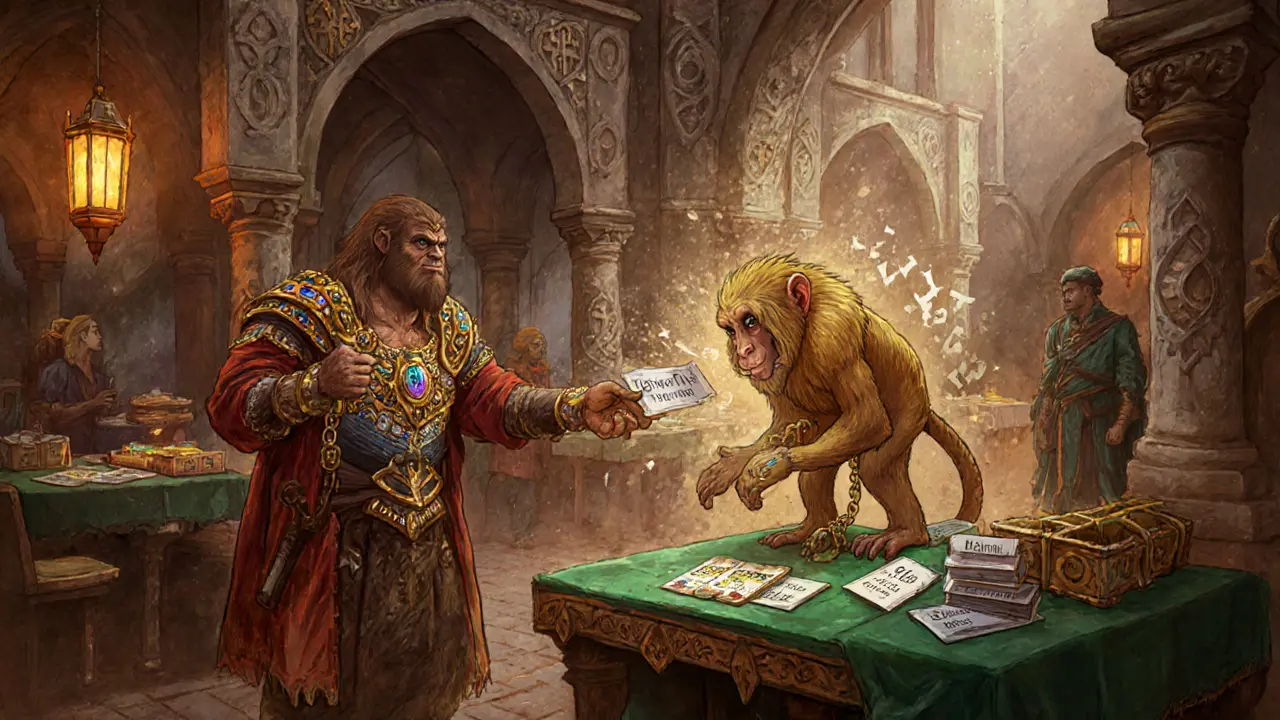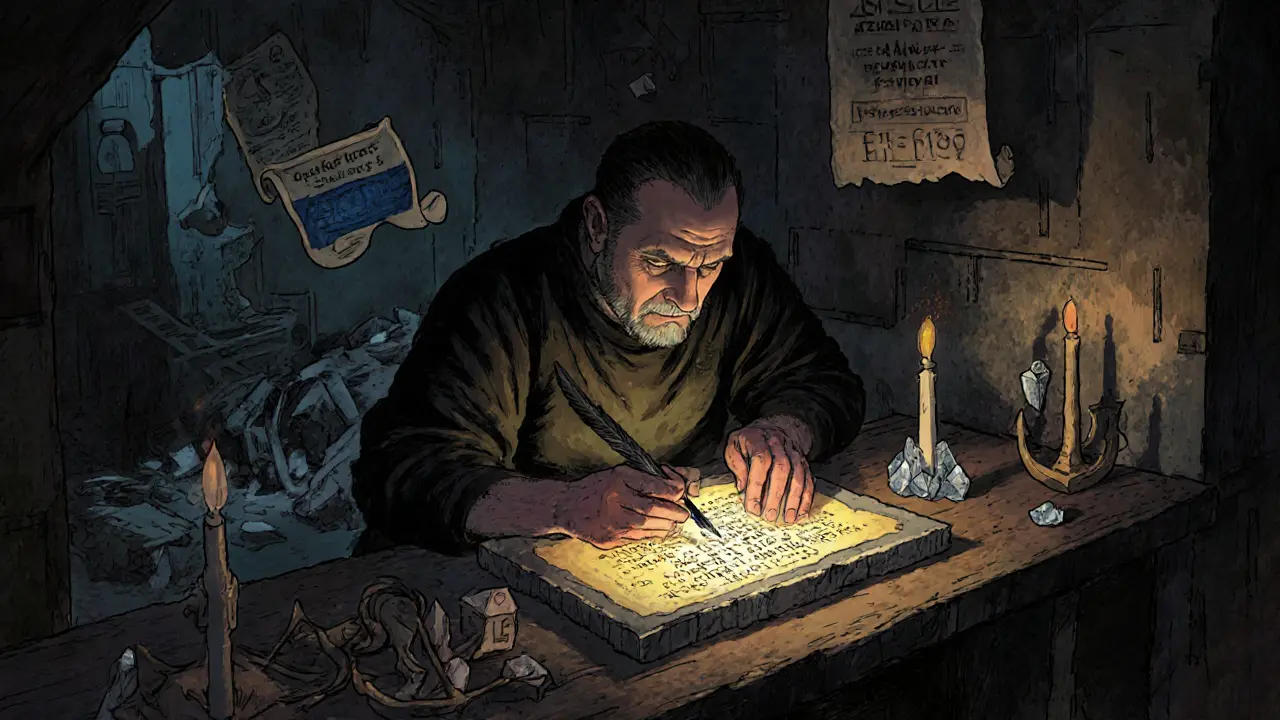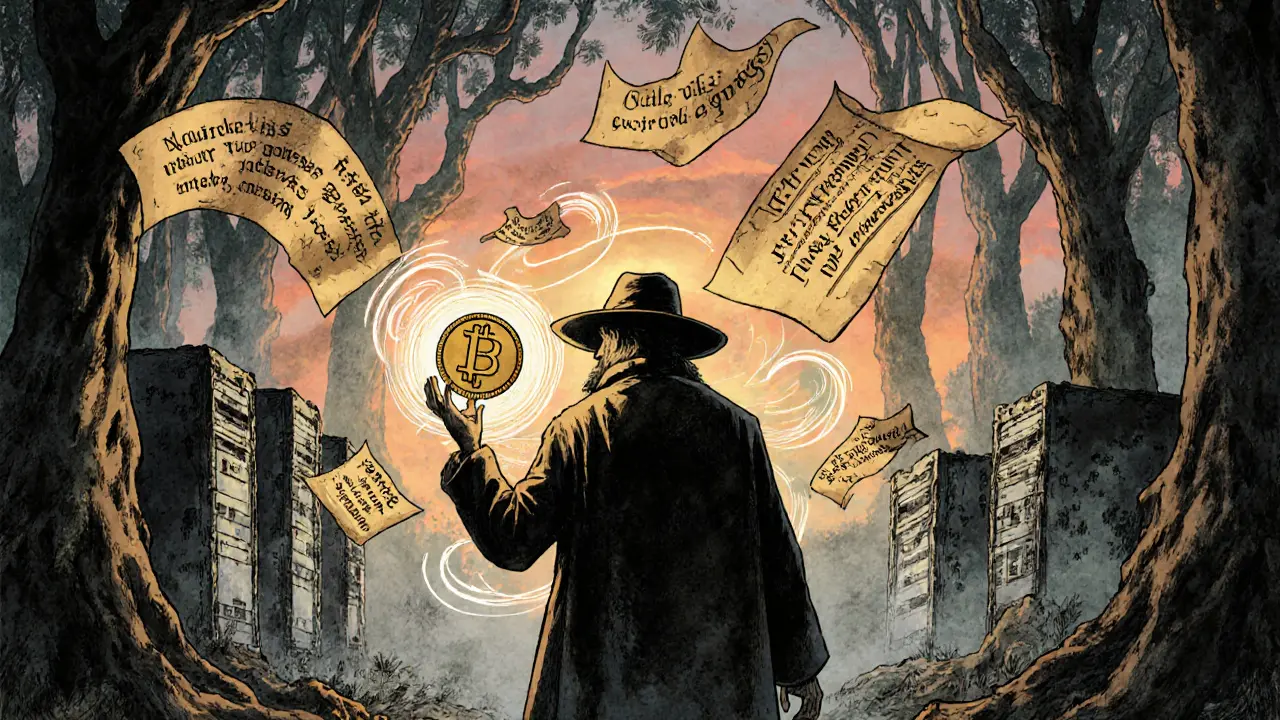NFT Metadata Validator
Paste your NFT metadata JSON here. The validator will check for required fields, proper formatting, and common errors.
Most people think an NFT is just a picture or a digital collectible. But what makes that NFT valuable, searchable, and usable across platforms isn’t the image itself - it’s the NFT metadata. Without properly structured metadata, your NFT is just a token with no identity. It won’t show up right on OpenSea. It won’t display traits in games. And if the file hosting goes down, your entire collection could vanish overnight.
What Exactly Is NFT Metadata?
NFT metadata is the structured data that describes your token. Think of it like a product label on a physical item - it tells you the name, description, features, and where to find the real thing. For NFTs, this data includes the asset’s name, description, image, traits, and links to external content. All of this is stored as a JSON file, which is read by marketplaces, wallets, and games to display your NFT correctly.The metadata doesn’t live on the blockchain itself. That would be too expensive and slow. Instead, the blockchain stores a URL - a pointer - to where the metadata file is hosted. This is called the tokenURI in Ethereum’s ERC-721 standard or uri in ERC-1155. When you open an NFT on OpenSea, your wallet asks the smart contract for that URL, fetches the JSON file, and renders the NFT using the data inside.
Core Fields Every NFT Metadata File Must Have
While the ERC-721 standard only requiresname and description, no serious NFT project skips the recommended fields. Here’s what a complete metadata file looks like:
- name: The title of your NFT. OpenSea limits this to 50 characters. Example: Bored Ape #4879
- description: A detailed explanation of the NFT. Supports Markdown for formatting. Example: A rare Bored Ape with laser eyes and a gold fur coat. Part of the Bored Ape Yacht Club collection.
- image: A direct URL to the image file. Must be absolute, not relative. Recommended size: 350x350px minimum, but art NFTs often use 5,200x5,200px for high-res viewing.
- external_url: A link to your project’s website, Discord, or additional info. Helps with trust and provenance.
- attributes: An array of traits that define your NFT’s uniqueness. Each trait has three parts:
trait_type: The category - like Fur, Eyes, or Clothesvalue: The specific value - like Golden, Laser, or Leather Jacketdisplay_type(optional): How to show the value - number, boost_percentage, or date. For example, a rarity score might use"display_type": "number"to show it as a numeric rank.
According to TokenMinds’ 2024 analysis of 4.3 million NFTs, collections that include all 12 of OpenSea’s recommended metadata fields see 47% higher discoverability. Gaming NFTs average 5.8 traits per token, while art NFTs average 3.2. More traits mean better filtering, better rarity rankings, and higher sales.
Where Is Metadata Stored? On-Chain vs Off-Chain
This is where things get critical. Most NFTs store metadata off-chain, meaning the JSON file lives on a server or decentralized network, not on the blockchain. The blockchain only holds the URL to that file.There are three main hosting options:
- HTTP (Centralized): 38.2% of NFTs use regular web servers (like AWS S3 or Cloudflare). Cheap and easy, but vulnerable. If the server goes down, your NFT breaks. The DigitalDreams project lost 92% of its value when their HTTP host shut down in 2023.
- IPFS (Decentralized): 59.1% of NFTs use IPFS, a peer-to-peer file system. Files are hashed and distributed across nodes. But here’s the catch: if no one "pins" (keeps a copy of) your file, it disappears. Pinata and Textile offer pinning services for $0.004 per GB/month.
- Arweave: 2.7% use Arweave, which pays once for permanent storage. It’s more expensive upfront but guarantees your metadata lasts forever.
Solana’s Metaplex standard takes a different approach. It stores key metadata - like name, image, and traits - directly on-chain using its Metadata Program. Only the animation or external link points off-chain. This reduces the risk of metadata decay but increases transaction costs. Creating metadata on Solana costs about $0.00025, while on Ethereum it’s $1.20-$5.00 depending on gas prices.

How Standards Differ Across Blockchains
Not all NFT standards are the same. Here’s how they compare:| Standard | Chain | Storage Model | Key Features | Average Cost per Metadata Tx |
|---|---|---|---|---|
| ERC-721 | Ethereum | Off-chain | Basic fields only. Requires tokenURI method. | $1.20 - $5.00 |
| ERC-1155 | Ethereum | Off-chain | Supports batch minting. Used by 78% of blockchain games. | $1.20 - $5.00 |
| Metaplex | Solana | On-chain + off-chain URI | Includes properties, collection, and uses fields. More secure. | $0.00025 |
| BEP-721 | Binance Smart Chain | Off-chain | Almost identical to ERC-721. Lower fees. | $0.03 |
| OpenSea Standard | Multi-chain | Off-chain | De facto industry standard. Recommends 12 fields. | N/A |
OpenSea’s metadata guidelines aren’t a formal standard, but 89% of Ethereum NFTs follow them. That’s because marketplaces rely on consistency. If your NFT doesn’t match OpenSea’s expected format, it might not display properly - even if the blockchain is correct.
Common Mistakes That Break NFTs
A shocking 42.7% of NFT issues come from bad metadata, according to Consensys. Here are the top errors:- Relative image paths: Using
"image": "/assets/ape.png"instead of"image": "https://yourdomain.com/assets/ape.png". This breaks on any platform that doesn’t serve from your root domain. - Invalid JSON: Missing commas, extra commas, unquoted keys, or using single quotes. JSON requires double quotes and strict formatting.
- Missing required fields: Forgetting
nameordescription- even though they’re "optional," most platforms won’t display the NFT without them. - Broken URIs: Hosting metadata on a free service that shuts down, or forgetting to pin on IPFS.
- Missing CORS headers: If your metadata is on an HTTP server, it must allow cross-origin requests. Otherwise, browsers block the fetch. This affects 28.7% of HTTP-hosted NFTs.
One Reddit user lost $42,000 in sales because they used a relative path. Another project had 4,382 NFTs become invisible when their server went offline. These aren’t hypotheticals - they happen every week.

How to Validate Your Metadata
Before you launch, test your metadata. Use these free tools:- OpenSea Metadata Validator: Paste your JSON or URI. It checks for missing fields, image size, and formatting. Used over 14,000 times in April 2024.
- IPFS Metadata Checker: Verifies if your file is pinned and accessible on IPFS. Has 2,384 GitHub stars.
- Metaplex Validator: For Solana projects. Checks if your on-chain metadata matches the off-chain URI.
- JSONLint: A simple tool to validate JSON syntax. Paste your file and fix errors before deploying.
Also, test your NFT on multiple wallets and marketplaces. What works on OpenSea might not render on LooksRare or Blur. Metadata consistency = better user experience = higher sales.
Future of NFT Metadata
The industry is moving toward more resilient standards. The NFT Metadata Alliance - formed in May 2024 by OpenSea, Coinbase, and Rarible - is working on a cross-chain metadata specification to be released by Q4 2024. Ethereum’s EIP-5169 proposes embedding metadata directly into contract bytecode, eliminating URI dependency. Solana’s Metaplex 2.1.0 added a newuses field to track how many times an NFT’s utility (like game access) has been claimed.
Meanwhile, regulatory pressure is rising. The EU’s MiCA regulation, effective December 30, 2024, will require NFTs classified as digital tokens to include creator identification and origin proof in their metadata. This isn’t just a technical issue anymore - it’s a legal one.
But the biggest threat remains metadata decay. According to Tableland’s 2024 report, 18.3% of NFTs created before 2022 already have broken links. That’s nearly 1 in 5 NFTs that no longer display correctly. If you’re building today, don’t gamble on HTTP. Use IPFS with pinning. Or go permanent with Arweave. Your collectors will thank you.
What You Should Do Now
If you’re creating an NFT project:- Use OpenSea’s metadata template as your base.
- Include at least 5 traits for gaming NFTs, 3 for art.
- Host your image and JSON on IPFS with Pinata or Arweave.
- Test your metadata with OpenSea’s validator.
- Verify CORS headers if using HTTP.
- Never use relative paths.
- Document your metadata structure for your team and community.
Metadata isn’t glamorous. But it’s the foundation. Without it, your NFT is invisible. With it, your collection can last for decades.

Leo Lanham
November 6, 2025 AT 08:51This whole NFT metadata thing is just digital voodoo. People act like if you don't have 12 fields your NFT turns into a pumpkin. It's a picture. It's a JPEG. Stop overcomplicating it.
Colin Byrne
November 8, 2025 AT 08:18While your post correctly outlines the technical structure, it ignores the fundamental philosophical flaw: metadata is a crutch for lazy art. If your NFT's value depends on a JSON file hosted on IPFS, then you've already admitted it's not art-it's a spreadsheet with a picture attached. The blockchain's promise was decentralization, not dependency on third-party pinning services. You're not securing value-you're outsourcing it to corporations that charge $0.004 per GB. That's not innovation. That's rent-seeking with better branding.
And don't get me started on OpenSea's 'industry standard.' Standards are for stagnation. They're the legal briefs of creativity. If your collection can't stand without 5.8 traits per token, then your art has no soul. It's algorithmic wallpaper.
Arweave? Sure, it's permanent. But permanence without meaning is just a tomb. We're building digital mausoleums for assets that will be forgotten in five years. The real innovation isn't in metadata-it's in rejecting the entire premise that NFTs need to be 'described' at all. Let the image speak. Or don't.
Whitney Fleras
November 8, 2025 AT 23:07Thanks for laying this out so clearly. I've seen too many new creators lose everything because they used a relative path or forgot to pin their IPFS files. It's heartbreaking. This guide should be mandatory reading for anyone launching a collection.
I especially appreciate the warning about CORS headers-so many people don't even know that's a thing until their NFTs stop showing up in wallets. Small details matter.
Brian Webb
November 10, 2025 AT 14:21Honestly, I think the real issue isn't metadata-it's trust. People treat NFTs like they're forever, but the moment the server goes down or the domain expires, the whole thing crumbles. It's like buying a painting and getting a note that says, 'The original hangs in my garage, here's the photo.'
I switched to Arweave last year after losing a piece to a failed HTTP host. Yeah, it cost more upfront, but I sleep better knowing my NFTs won't vanish because some startup ran out of funding. It's not sexy, but it's responsible.
Also, I always test on Blur and LooksRare before launch. OpenSea isn't the whole world. If it doesn't render there, you're losing buyers who don't use OpenSea.
Chris Hollis
November 10, 2025 AT 19:2042.7% of issues from bad metadata? That's not a bug, it's a feature. If people can't even get JSON right, they shouldn't be minting NFTs. The market will sort itself out. The ones who survive are the ones who didn't need metadata in the first place.
Matthew Gonzalez
November 12, 2025 AT 18:35Metadata is the ghost in the machine. The blockchain holds the token, but the metadata holds the soul. Without it, you have a number. With it, you have a story. That’s why IPFS matters. Not because it’s decentralized-it’s because it lets the story outlive the host.
But here’s the quiet truth: most people don’t care about traits or JSON. They care about belonging. The metadata just makes the belonging feel real.
Grace Huegel
November 13, 2025 AT 12:05How quaint. You treat metadata like it’s sacred. Meanwhile, the entire NFT space is a speculative Ponzi dressed up as digital ownership. If you think storing a JSON file on Arweave makes your cartoon ape 'valuable,' you’ve missed the entire point. It’s not about standards-it’s about gullibility.
Robert Bailey
November 14, 2025 AT 12:51Big thanks for this. I just launched my first collection and was about to use HTTP because it was easier. Now I'm switching to Pinata. You saved me from a disaster.
Allison Doumith
November 15, 2025 AT 00:59Let’s be real-the real metadata isn’t in the JSON. It’s in the community. The Discord. The memes. The inside jokes. The fact that someone paid $10k for a pixelated monkey because they felt seen. That’s the real data. The rest is just technical scaffolding for people who need to believe in something tangible.
And yet, here we are, debating commas in JSON like it’s the Ten Commandments. We’ve turned art into an API spec.
Scot Henry
November 16, 2025 AT 20:45just a quick note: if your image url is https://yourdomain.com/ape.png make sure the server actually serves it as image/png not text/html. i lost a whole batch because my host was misconfigured and opensea just showed a blank. took me 3 days to figure it out. jsonlint saved me tho.
Sunidhi Arakere
November 17, 2025 AT 20:57Very informative. I am from India and many here are entering NFT space without understanding basics. This guide should be shared widely. Thank you.